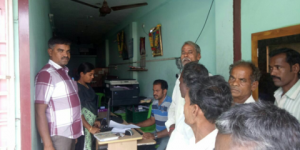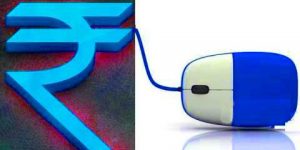By Harun R Khan, Former Deputy Governor, RBI
The inter-linkage of Indian economy with the rest of the world has been growing at a rapid pace, and therefore, global developments influence the domestic economy in a much bigger way than before. Though the spill over effect can take place through multiple channels, it mostly gets transmitted through the commerce or trade channel, through the capital flows channel and through the confidence channel.
The falling exports for a prolonged period is an issue that needs serious attention. What is worrying is the fact that our market shares have fallen from 1.7 in 2011 per cent to 1.6 per cent in 2015. The falling crude prices may have helped the country to bring down the current account deficit but once oil prices start recovering, the challenge before the country would be to increase exports if the CAD has to be contained on a sustainable basis. A recent IMF working paper on Price and Income Elasticity of Indian Exports has concluded that Indian goods exports are sensitive to external demand and to international relative price-competitiveness. Manufacturing sector exports are estimated to be more price elastic and sensitive to global demand developments in the short-term. Services exports are also not exhibiting buoyant trends with the market share falling from 3.2 per cent in 2011-12 to 3.1 per cent in 2013-14. The prospects of a sluggish global economic recovery may pose challenges for India to achieve significant export growth acceleration in the coming years whereas supply-side constraints could dampen the price responsiveness in the short-term. In the backdrop of uncertain global demand, the challenge for the country would be to search for new markets and new products for existing markets besides addressing the issues relating to competitiveness of Indian exports.
As we have seen in the past, capital flows are usually susceptible to periodic phases of sudden stops and/or reversals which can put downward pressure on Rupee. Despite India’s relatively stronger fundamentals, the confidence or contagion effect of a global safe haven move could have its impact on the Rupee. Here the importance of attracting stable flows like FDI needs to be highlighted. As shown in Table 1, the policy adjustments and improved macro-economic environment have helped us to attract more FDI flows this year than the last year. As hitherto, Government and Reserve Bank would, of course, continue to be on constant vigil and be ready to take proactive measures in respect of the evolving situation in the external sector.
Macroeconomic stability is important to contain contagion effects arising out of the confidence channel. Government has shown its firm commitment for fiscal consolidation. The Economic Survey 2016 has brought out that India taxes and spends less than OECD countries and even its emerging market peers. After adjusting for the level of economic development and democracy, India?s tax/GDP ratio is 5.4 per cent less than that of comparable countries, while its expenditure/GDP ratio lags by 6.4 per cent. Nearly 85 per cent of the economy is outside the tax net. While these developments may be explained by historical differences, the need to catch up with EM peers and the OECD countries in the next few decades would be important in determining the extent and pace of India?s infrastructure development and, by extension, future economic development. Therefore, even as fiscal consolidation is on track in terms of GFD/GDP target ratios, there may well be a need to broaden the reach of fiscal reform by setting a targeted path to increase both tax revenue and fiscal expenditure.
Retail inflation in India as measured by CPI rose for the sixth straight month in January 2016. The CPI for January at 5.69 per cent was the highest figure recorded since August of 2014. Similarly, food inflation at 6.85 per cent in January was also the highest in 17 months. Despite these numbers, we are on track as far as meeting the inflation targets is concerned in near term4. There are, however, risks to meeting our projections. Besides structural factors like persistent high level of food prices due to rising income level not being matched by increase in productivity, production and distribution of food items, in particular protein/pulses food, the implementation of the seventh Central Pay Commission award, monsoon and the path of commodity prices including crude prices have to be factored in the near term inflation outlook.
There have been discussions in recent times about the stress in banking and corporate balance sheets. In respect of health of Indian banks, the Reserve Bank has taken various steps to address the issue of stressed assets of the banks. After a comprehensive asset quality review, banks have initiated the process of cleaning up balance sheets by March 2017. While this may lead to a short-term impact on profitability of some of the PSU banks, it would enable a healthy flow of credit to the system in the long run. Further, efforts at improving the capital buffers of banks will be helpful as they prepare to lend more now, after cleaning up their balance sheets. Also, the steps being taken to improve governance in banks, such as the setting up of a Banks? Board Bureau (BBB), would complement these efforts to develop and strengthen the banking sector. In respect of corporate sector stress, as evident from profitability and lower interest coverage ratio, the efforts at deleveraging, including by way of exit from non-core business, enhanced productivity and additional equity infusion and better governance practices supported by policies aimed at containing the global headwinds have to be fast-tracked.
A deep, vibrant and well-developed financial market is needed to facilitate efficient resource allocation, risk dispersion and credit intermediation. Government, Reserve Bank, and other regulators have been constantly engaged in taking measures that would help in developing markets. During the last few years, Reserve Bank has taken various measures including introduction of currency futures and options, interest rate futures which would add to the menu of already existing over the counter instruments for managing the currency and interest rate risks. Further, in order to give a fillip to the development of term repo market, Reserve Bank allowed re-repoing of securities acquired under market repo. These products, if used judiciously would facilitate corporates to manage their risk exposure efficiently.
Underscoring the importance of a vibrant corporate bond market that could help the country in meeting the large scale infrastructure financing, Reserve Bank has allowed repo in corporate bonds as well as selling and buying of single name Credit Default Swaps. There is also a proposal to introduce electronic trading platform for corporate bonds in India. I would, however, like to add here that we have not seen a wide range of players participating in recently launched products-be it in the area of currency derivatives or interest rate derivatives. Government is initiating the process of legislation for lender protection that would incentivise flow of debt funds to corporates. The Government has announced a slew of proposals in the Union Budget for 2016-17 that would give a fillip to the corporate bond market in India. These include expanding the investment basket for foreign portfolio investors to include unlisted debt securities and pass through securities issued by securitisation and introduction of electronic auction platform for primary debt. Early passage of the Bankruptcy Code will greatly facilitate the development of corporate debt market. Reserve Bank in collaboration with the Government and other regulators will continue with its efforts in bringing about reforms in the financial sector.
While domestic policies that reinforce the macro-economic fundamentals help us to cope with external vulnerabilities, given our increasing level of international linkages we cannot be immune to spill-back effects of action or inaction of other countries, particularly arising from surges in inflows or sudden & substantial outflows. This calls for regional and global safety nets in terms of multilateral institutional mechanisms for funding support. It is also imperative that institutional mechanisms (e.g., the International Monetary Fund) should exist at the global level to assess the policies of large economies from the point of their contagion impact on other countries, particularly EMDEs and advise them to factor such consequences in their policy framework. India will have to work vigorously to build-up global consensus in this area.








